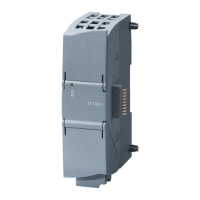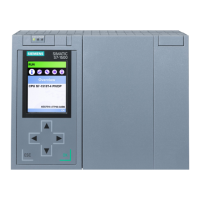Communication
10.2 PROFINET
S7-1200 Programmable controller
530 System Manual, 03/2014, A5E02486680-AG
1 80B4 TCON: When using the ISO on TCP (connection_type = B#16#12) to establish a
passive connection, condition code 80B4 alerts you that the TSAP entered did not
conform to one of the following address requirements:
• For a local TSAP length of 2 and a TSAP ID value of either E0 or E1 (hexadecimal)
for the first byte, the second byte must be either 00 or 01.
• For a local TSAP length of 3 or greater and a TSAP ID value of either E0 or E1
(hexadecimal) for the first byte, the second byte must be either 00 or 01 and all
other bytes must be valid ASCII characters.
• For a local TSAP length of 3 or greater and the first byte of the TSAP ID does not
have a value of either E0 or E1 (hexadecimal), then all bytes of the TSAP ID must
be valid ASCII characters.
Valid ASCII characters are byte values from 20 to 7E (hexadecimal).
TCON: Parameter assignment error in parameter connection_type
1 80B7 TCON: Data type and/or length of the transmitted data does not fit in the area in the
partner CPU, in which it is to be written.
TCON: Parameter in the local connection description and Parameter ID are different.
TCON: All connection resources are in use.
1 80C4 Temporary communications error:
• The connection cannot be established at this time (TCON).
• The configured connection is currently being removed by TDISCON (TCON).
• The connection is currently being established (TDISCON).
• The interface is receiving new parameters (TCON and TDISCON).
Note
When using PROFINET Open User communication, if you execute a TSEND instruction
without a corresponding TRCV instruction executing on the remote device, then the TSEND
instruction may reside indefinitely in a "Busy State", waiting for the T
RCV instruction to
receive the data. In this state, the TSEND instruction "Busy" output is set, and the "Status"
output has a value of "0x7002". This condition may occur if you are transferring more than
4096 bytes of data. The issue is resolved at the nex
t execution of the TRCV instruction.

